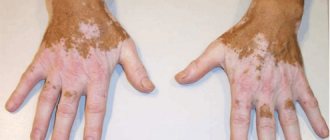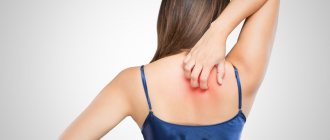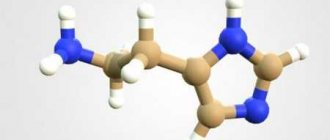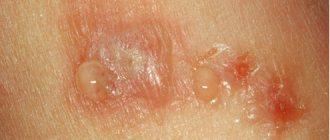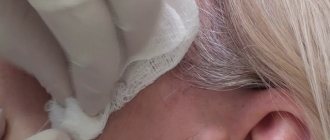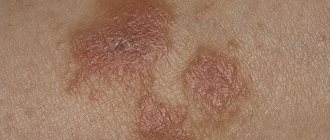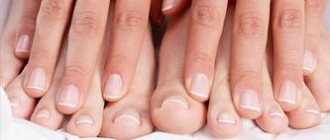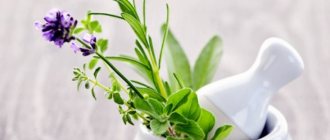What to do first
At its core, urticaria is an allergy. Therefore, at the first symptoms of urticaria, it is necessary to immediately take some actions:
- take an antihistamine;
- if it manifests itself in a severe form, medication with glucocorticosteroids is also necessary.
Basic medications that should be in any home medicine cabinet for allergy sufferers are antihistamines and hormonal agents to relieve symptoms. Antihistamines: citrine, alerzine, aleron, loratadine, diazolin, suprastin. Glucocorticosteroid drugs: Flix, Flixotide, Avamis. Treatment of urticaria also involves removing toxins from the body. Since the rash appears due to the fact that the pancreas has not coped with its work and thus gives a signal that not everything is in order in the body. Therefore, a person who constantly has rashes should also have enterosorbents in their first aid kit:
- polysorb;
- filtrum;
- enteros-gel;
- white or black coal.
To relieve itching and inflammation of the skin, there are many ointments that almost immediately relieve symptoms: fenistil gel, hydrocortisone, cutivate, prednisolone, diprosalic, triderm.
Avamys is a glucocorticosteroid drug
What reasons can cause a rash?
In order for the treatment not to be in vain, and the result to last for a long time, you should know the causes of the rash:
- food products;
- medicines;
- infectious processes in the body;
- worms;
- insect bites;
- contact with animal fur;
- under the influence of physical reasons (hypothermia, overheating, sun rays).
It is divided into acute and chronic forms. The acute form is very dangerous due to the complications it may incur that can be quite disastrous for a person.
- Quincke's edema. A very rapid increase in symptoms, such as swelling of the throat, swelling of the tongue, resulting in an attack of suffocation.
- Anaphylactic shock. A sharp jump in body temperature, disturbances in heart function, decreased blood pressure. May cause coma or death.
An insect bite can cause hives
Causes and manifestations
Signs of urticaria can appear equally in adults and children. The causes of an allergic reaction can be different:
- Influence of the external environment: cold, water, ultraviolet rays, radiation.
- Food. The most common allergens are chocolate, cocoa, honey, nuts, citrus fruits, strawberries.
- Medicines, most often antibiotics - penicillin, Rifampicin, Tetracycline and others.
- Insect bites - bees, wasps, hornets and even mosquitoes.
- Animal fur.
- Plant pollen.
- Exposure to harsh chemicals such as cleaning agents and detergents.
It is very important to notice the first signs in time and immediately relieve an allergic attack. The symptoms of the disease are as follows:
- the skin turns red;
- swelling or even large blisters appear;
- touching the affected areas causes a painful sensation;
- itching, which intensifies in the evening and at night;
- sometimes - fever, chills, nausea.
Symptoms of urticaria
With the development of urticaria, pathological symptoms may appear within a few minutes, but may also appear after several hours or days.
Doctors call the main symptoms of this pathological process:
- The first symptom is severe itching;
- After this, swelling and rashes of oval blisters, pale pink in color, appear;
- At the sites of the irritant, the skin turns red and painful swelling appears;
- In the absence of medical assistance, the blisters merge with each other into irregularly shaped plaques, turn white, and an inflamed border remains along the edge;
- Body temperature may rise and the patient’s general condition worsens;
- Quincke's edema and anaphylactic shock.
Particular attention should be paid to symptoms such as increased body temperature. It can rise to 39 degrees, the patient is bothered by bouts of fever and even febrile seizures, vomiting and chills.
Folk remedies in the treatment of urticaria in adults
How to get rid of urticaria in adults at home? There is one proven option - this is treatment with folk remedies. People have suffered from hives before, so over the years a considerable list of options has developed. Very often, even doctors do not neglect treatment with herbs and natural ingredients. Folk remedies for urticaria.
- Celery. This plant is widely used for various skin diseases. It perfectly relieves swelling, improves body tone, and has a beneficial effect on the stomach. Use freshly squeezed juice or infusion. It is recommended to drink a tablespoon of healing decoction or juice half an hour before meals. The mass of leaves is also used in the form of compresses, applied to the affected areas of the skin. In order to prepare the infusion, you need the root of the plant. It is infused in boiling water for about two hours. It relieves swelling well and has a diuretic effect.
- Nettle. Tea or an infusion is made from the leaves of this plant. To make an infusion, you need to pour boiling water (200 ml) into two tablespoons of crushed leaves. leave until completely cool. Used for compresses. Tea should be consumed several times a day. To make tea more tasty, honey is added to it if you are not allergic to it. Ice is also made from tea, which is then used to treat affected areas of the skin. Ice perfectly relieves itching and swelling.
- Valerian and hawthorn for urticaria are needed to relieve nervous tension and improve sleep. These plants are especially good when the cause of hives is stress or nervous exhaustion. It is best to take a mixture of these herbs at night - 30 drops.
- Yarrow. A decoction of this plant has an anti-inflammatory effect. It should be taken orally. The skin is treated with yarrow tincture: 20 g of raw material is infused in boiling water for half an hour. Take 100 ml before meals, three times a day. The tincture is made at the rate of 50 g of raw materials per 0.5 liter of vodka. Infuse for a week in a dark place. Then lotions are made from the filtered tincture.
- Horseradish. Has a bactericidal and anti-inflammatory effect. The juice is squeezed out of the root of the plant and mixed with honey one to one. Take a teaspoon before meals. This mixture helps remove toxins from the body.
- Mint. Its infusion has a calming effect. They drink it like tea by brewing its leaves.
- It is very useful to drink a decoction of wheatgrass root. This plant helps cleanse the blood, thereby ridding the body of accumulated toxins.
- Infusion of raspberry roots. Boil 200 g of raspberry roots for twenty-five minutes. Then leave for another hour, then drink half a glass 4 times a day.
- Dry roots of marsh calamus are ground into powder. This powder should be taken twice a day.
Finding the ideal remedy on your own is very difficult, because the signs of the disease are approximately the same, but the reason that caused such manifestations is different for each person. Therefore, it is simply impossible to do without the help of an experienced specialist.
And also the list of folk remedies includes not only decoctions and infusions of herbs, but also home-made ointments. They also consist of natural ingredients that can relieve the discomfort that the rash brings.
Celery juice can help get rid of hives
The best antihistamines for urticaria
Since urticaria is a consequence of the body’s allergic reaction to an irritant, a mandatory stage of treatment is taking an antihistamine. It will quickly relieve itching, burning, swelling, and redness. The principle of action is to block H1-histamine receptors, which prevents complications. We have selected the fastest-acting, safest medications.
A Hungarian drug of the first generation, the active component of which is chloropyramine. Available in solid and liquid forms for oral administration and injection. It begins to act within 15-30 minutes, maintaining the effect for up to 3-6 hours. The dosage of one tablet is 25 mg; in emergency cases, injections are preferred. Children over 3 years old are allowed. Maximum absorption is possible when taking the tablets orally with food. In addition to the antihistamine effect, a sedative effect is noted. The average cost is 140 rubles, the risks of developing unwanted reactions are extremely small.
Advantages:
- Speed of onset of effect;
- Pediatrician approved;
- Effective relief of symptoms;
- Sedative effect;
- Minimal risks to the body;
- Inexpensive.
Flaws:
- State of lethargy;
- Drowsiness.
For adults, 1 dose is prescribed up to 3-4 times a day; for children, the dosage is selected taking into account weight, age, and doctor’s recommendations. If these are injections, then 1-2 ml, preferably before bedtime due to drowsiness and mental retardation. Suprastin is prescribed to those patients who are prone to side effects of antihistamine treatment.
The best remedies for mosquito bites
Loratadine
A popular antihistamine for urticaria due to price and availability. Its effectiveness against various types of allergies has been proven by numerous clinical studies. Unlike the previous nominee, the treatment method here is much simpler - once a day. The active component is loratadine hydrochloride, blocks H1-histamine receptors, eliminates swelling and itching in about 30 minutes. Reception does not affect the nervous system, so drowsiness or retardation of consciousness is not observed. Loratadine is good because it does not have withdrawal symptoms or addiction. Allowed from 12 years of age, small children are offered a syrup form. The price of a package with 10 tablets is 20-40 rubles.
Advantages:
- Proven effectiveness;
- Simple regimen;
- No effect on the nervous system;
- Syrup for children;
- Soft action;
- Price.
Flaws:
- Prohibition for pregnant women and breastfeeding;
- Not for severe allergies.
The tablet is taken once a day, the course of treatment does not exceed 2 weeks. If it is syrup, children are given a teaspoon. In difficult situations, the doctor extends therapy up to a month. Loratadine tablets are not recommended for serious kidney and liver diseases.
First aid
Below we will discuss in detail methods on how to treat urticaria in adults at home using folk remedies, but first aid should be provided immediately:
- give the patient an antihistamine;
- take cell membrane stabilizing drugs;
- in severe cases, take pharmaceutical glucocorticosteroids.
Therapy is carried out using:
- antihistamines (a course of at least five days, helps block an allergic reaction - Suprastin, Diazolin, Cetrin);
- corticosteroids (for complications of urticaria, swelling - Prednisolone);
- sedatives (soothe, improve sleep, relieves itching - Donormil, Atarax);
- enterosorbents (remove the allergen from the body - Polysorb, Filtrum);
- drugs that can relieve itching (helps make the skin less sensitive and relieve irritation - Fenistil-gel).
Ointments are used for local treatment. Non-hormonal ointments have antimicrobial, antihistamine, drying and anti-inflammatory effects:
- zinc;
- salicylo-zinc;
- Fenistil-gel;
- Nezulin.
You can use natural-based products that relieve itching, irritation and have antifungal and antiallergic effects - for example, Skin-Up or La-Cree.
For severe, acute forms of urticaria, hormonal ointments are used:
- Advantan;
- Elokom;
- Fluorocort;
- Gistan-N;
- Sinaflan.
If urticaria is a manifestation of Quincke's edema, anaphylactic shock or any other dangerous condition, the person needs immediate first aid:
- Call an ambulance as quickly as possible (the patient turned red and began to choke).
- Provide oxygen access to the respiratory tract. Lay the person horizontally and straighten the neck. Make sure there is no chewing gum or anything else in your mouth that could block your airways.
- Provide blood pressure support by placing the patient in a horizontal position with legs elevated.
- Allergy sufferers usually have the necessary medications with them (a syringe with adrenaline or dexamethasone). Adrenaline is injected intramuscularly into the upper third of the thigh. If it is not possible to give an injection, just wait for the ambulance to arrive.
A person who is prone to attacks should know what to do with hives if the disease worsens. It is important to learn to recognize the symptoms of anaphylaxis and angioedema, which often accompany urticaria.
A sudden drop in blood pressure, difficulty breathing, hoarseness and pain in the lower abdomen indicate the onset of anaphylactic shock, which requires immediate hospitalization. At the first signs of shock, a person should call an ambulance and take antihistamines, epinephrine (adrenaline), and hormones. These products are prescribed by a doctor and should always be kept in your home medicine cabinet.
- If there are no symptoms of anaphylactic shock, an attack of urticaria is accompanied by rashes and itching, you can limit yourself to an antihistamine, for example, Suprastin or Tavegil.
- It is necessary to immediately remove the allergen that triggered the attack, be it medications or any food, for example, chocolate, wine, citrus fruits.
- If urticaria is a reaction to food, you can take absorbent drugs, activated, white carbon, Enterosgel.
- In case of an insect bite, carefully remove the sting from the skin.
- If the rash is caused by a contact allergen, for example, a cosmetic or detergent, it should be washed off the skin with plenty of warm water.
We suggest you familiarize yourself with Boil under the arm, treatment at home
Treatment options for urticaria can vary. But there are situations and manifestations of the rash that require emergency care. Often we are talking about such an option as help to save a person’s life. It is clear that folk remedies will not help in such a situation and it is necessary to act with the help of medications.
Ambulance may be required in situations where we are talking about Quincke's edema and anaphylactic shock, i.e. when swelling in the throat develops very quickly, as a result of which the airways become blocked, and the person simply begins to suffocate.
Under the influence of histamine, vascular collapse also often develops, due to which blood pressure begins to drop and problems with blood circulation are noted. Against this background, oxygen starvation of the entire body, including the brain, develops. Often the result can be clouding of consciousness and fainting.
What should you do first in such a situation? Call an ambulance. The fact that urgent medical intervention is required will be indicated by:
- Redness and subsequent blue discoloration of human skin;
- Inability to breathe;
- Characteristic signs of a person who is choking: bulging eyes, protruding tongue, wheezing, etc.
The maximum that can be done before the doctors arrive is to lay the victim down and elevate his legs to increase blood flow, and therefore restore pressure. Doctors will stabilize the patient's condition with injections of adrenaline or prednisolone.
Diet food
Compliance with a therapeutic diet is the key to successful treatment of almost any disease, including urticaria. In this case, it is recommended to exclude from the menu those foods that may provoke an atypical reaction in the body.
These include citrus fruits, honey, chocolate, as well as vegetables, fruits and berries in red and orange. Following such a diet is important for both adults and children. The menu should include:
- fresh fruits, vegetables and berries, except for those prohibited;
- greens - of all similar products, it is recommended, first of all, to consume dill, since this plant has antihistamine and antitoxic properties, therefore it helps to get rid of the manifestations of the disease;
- porridge cooked in water;
- vegetable oils, in particular sunflower and olive oil - these products are recommended for dressing salads;
- dietary poultry and rabbit meat, as well as veal and beef, but only in the absence of individual intolerance and allergy to milk protein;
- milk and products made from it with a minimum mass fraction of fat content - such products can also be consumed only if the body does not reject milk protein;
- yeast-free bakery products.
Such nutrition will help not only reduce the likelihood of exacerbation of the disease and increase the effectiveness of therapy, but also improve the condition of the entire body.
Treating urticaria at home with ointments made from natural ingredients
- St. John's wort. The crushed leaves of this plant are mixed with petroleum jelly or baby cream, and left for a day so that the composition of the plant can fully dissolve in the cream. Apply ointment to the affected skin twice a day. Has a softening effect.
- You can make an ointment with celandine. The cream production process is the same as in the previous case. Store such ointments on the refrigerator door.
- You can make your own vitamin cream for yourself. Take baby cream, add retinol acetate oil solution and vitamin E. Apply to the rash on the body daily. The vitamin complex will promote the healing of skin microdamages and improve its condition.
- Olive oil is also a great helper in the difficult fight against rashes. It has a softening effect, soothes the skin, making it more elastic with prolonged use. Sea buckthorn oil helps a lot.
- Essential oils of tea tree, lavender, and string can be added to the bath before bed for a calming effect.
Another folk remedy for hives is birch tar. You can buy a bottle of this product at any pharmacy kiosk. Dilute eight parts of boiled water to one part of tar. Leave for two days. Then you should remove the film that has formed. Carefully pour the tar water into another container.
Should be stored in the refrigerator or any cool, dark place. At night you need to take a tablespoon; if the form of the disease is very severe, you can increase the dose to a maximum of three tablespoons.
Used as a diuretic to remove toxins from the body.
Lavender essential oil is great for soothing the skin
Urticaria in children and treatment with folk remedies
Such measures are possible only after consultation with a doctor. The treating doctor will calculate and prescribe acceptable dosages in combination with other medications. Some recipes for traditional treatment of urticaria in children that really work will be described below.
- Most often, children are given herbal decoctions that have an anti-inflammatory and strengthening effect. These are plants such as: chamomile, St. John's wort, string, licorice root, calendula, echinacea. Boil two tablespoons of any raw material for five to ten minutes in 200 ml of water. You need to drink 100 ml per day. before every meal.
- Linden, mint and nettle in the form of tea will help calm and strengthen the baby's nervous system.
- A good remedy is an ointment based on castor oil. First you need an infusion of calendula. Then mix a teaspoon of infusion with two tablespoons of oil. This product is very good at relieving itching and inflammation of the skin.
- To make the rash less itchy, you can give your baby a bath with a decoction of oatmeal added.
- Beetroot compresses relieve swelling and inflammation.
- You can lubricate your child’s skin with the same cream with the addition of retinol acetate and vitamin E. This will help heal and relieve inflammation from the affected areas.
In addition to all these actions, you should follow a strict diet, because only all the folk remedies listed will not have an effect if the cause of the occurrence is not treated.
Chamomile will calm the symptoms of childhood urticaria
During pregnancy
During pregnancy or after childbirth, the disease may occur for the following reasons:
- hormonal disbalance;
- lack of rest;
- stressful situations;
- weakened immunity.
During pregnancy, rashes usually first appear on the stomach, which then spread to the buttocks, thighs, etc. After childbirth, the initial rash can occur anywhere on the body. In addition to the rash, a woman may be bothered by the following symptoms:
- poor sleep, insomnia;
- irritability;
- weakness.
Often urticaria becomes chronic, so it is necessary to consult a doctor as soon as possible and begin treatment.
There is no danger to the baby with this disease. However, the development of the embryo may be negatively affected by disorders of the nervous system (for example, nervousness) that accompany urticaria.
The attending physician most often prescribes only external non-hormonal agents that neutralize itching. The doctor may also recommend certain medications to improve your general condition.
Medicines prescribed for urticaria during pregnancy and lactation:
- vitamins (strengthening immunity);
- sorbents (removal of toxic substances);
- drugs that help the liver function;
- prebiotics, probiotics, etc.
In rare cases (if a woman is prescribed these drugs, breastfeeding must be stopped for a while):
- hormonal ointments;
- antihistamines;
- steroids.
You should definitely consult a specialist. Do not self-medicate under any circumstances.
Since many drugs are prohibited during this wonderful period, you must try to identify the allergen and get rid of it:
- eat right;
- wear cotton clothes;
- do not use hygiene products with fragrances;
- stay outdoors more, ventilate the room.
For treatment, consult a doctor. Most often, the treatment regimen includes:
- creams, ointments, gels with a cooling effect;
- in extreme cases, antihistamines are prescribed;
- sorbents (drinking activated carbon is allowed during pregnancy);
- can share a recipe for folk remedies.
The described methods can be used in the treatment of urticaria in adults at home. But you need to remember that there should be no individual intolerance to the selected foods and herbs, otherwise the urticaria will worsen.
Urticaria during pregnancy can be triggered by the same reasons and factors as in other patients. Although some doctors note that toxicosis and hormonal changes in the body can also provoke it, for the most part this is a chronic course of the pathological process.
If the process is triggered by hormonal changes and an increase in the hormone estrogen, this can cause serious complications for the pregnant woman herself.
For the fetus itself, urticaria does not pose a potential danger, since a natural protective barrier in the form of the placenta stands in the way of allergens.
The medications themselves, especially antihistamines, used in the treatment of urticaria in pregnant women can harm the fetus.
Therefore, the course of treatment is selected exclusively by the attending physician, taking into account the woman’s situation. Safe methods of treating urticaria in a pregnant woman include taking sorbents and probiotics, and you should also follow a diet.
The best sedative for urticaria
Frequent companions of urticaria are nervousness, irritability, and insomnia. To reduce excitability without causing complications, the dermatologist prescribes sedative medications. Preference is given to safe sedatives that do not harm the nervous system and other internal organs. After analyzing expert advice, patient reviews, and clinical studies, we have chosen one undoubted leader in this rating category.
Persen Forte
A sedative from a Slovenian pharmaceutical company with an increased concentration of active substances. The main difference between this nominee and all those described above is its herbal composition without synthetic additives. To relieve irritability and have an antispasmodic effect, Persen Forte included lemon balm, peppermint, and valerian. It is prescribed for any diseases accompanied by increased irritability. Release form: small red-brown capsules for swallowing orally. Treatment is allowed from 12 years of age. The package contains 40 tablets, their price is 300-350 rubles. Pregnant and breastfeeding women need a doctor's permission.
Advantages:
- Plant origin;
- Convenient capsules;
- Getting rid of nervousness;
- Quick tangible effect;
- No addiction syndrome;
- Doesn't make you sleepy.
Flaws:
- Price;
- Adults only.
Take Persen Forte if urticaria is caused by stress, 1-2 capsules up to 3 times a day. The course of treatment depends on the complexity of the disease, from 2 to 8 weeks. Despite its plant origin, patients observe the effect already in the first days of therapy. In rare cases, a long course provokes constipation.
Urticaria with heartburn, how to treat
Often, hives are accompanied by another unpleasant symptom, especially when the rash is caused by the accumulation of toxins, this is heartburn. In this case, components are used that have a beneficial effect on the performance of the gastrointestinal tract:
- the same celery, decoctions of parsley or fennel;
- Almonds mixed with walnuts are pounded in a mortar, then taken a tablespoon before meals for a week;
- 100 g aloe + 100 g cranberry juice + 1 tbsp. l. honey - this composition is taken for a week, a tablespoon before meals;
- 100 g of anise seeds are thoroughly crushed and poured with a liter of vodka or alcohol, placed in a dark place in a closed container: leave for a month, after a month add 300 g of sugar, cinnamon or orange zest to taste;
- mint infusion;
- flax seeds: an infusion of them helps to improve intestinal motility, eliminate unpleasant signs of heartburn and remove toxins from the body;
- You should chew the bark of the rowan tree, swallow the saliva, and spit out the rest - in about twenty minutes you will feel relief;
- drinking medicinal alkaline mineral water is a great way to get rid of heartburn;
- beet juice improves the functioning of the stomach, having a beneficial effect on the microflora - you need to drink it on an empty stomach in the morning before meals for about a month, a tablespoon of sunflower oil can alleviate suffering;
- pumpkin juice is also an excellent tasty remedy for improving the functioning of the gastrointestinal tract; cabbage juice has a quick and gentle effect in the fight against this problem.
Another time-tested remedy for both hives and heartburn is baking soda.
Stir soda and water in a cup until a sour cream-like structure is formed. This composition is applied to the affected body, the itching is very quickly relieved. To get rid of heartburn, soda is taken orally.
Pumpkin juice restores the functioning of the stomach and intestines
conclusions
Urticaria can be treated at home with folk remedies. However, this does not mean that you do not need to see a doctor. It is imperative to establish the true reason for this reaction of the body. You don’t have to use any folk remedies, and after taking antihistamines, the rash at the initial stage will go away almost immediately. An experienced doctor will prescribe a comprehensive treatment and prescribe which of the above remedies can be used.
If a person is allergic to ragweed or wormwood, then he should not consume honey on its own, not to mention smearing himself with it, and he also cannot be treated with herbs, otherwise it can provoke Quincke's edema or anaphylactic shock.
Do not self-medicate. It is best to practice prevention rather than cure. Therefore, if you know that you are allergic to a particular product, avoid eating it, lead a healthy lifestyle, don’t get nervous, walk more and strengthen your immune system. Then you won’t be afraid of any hives.
Diet during treatment
Since urticaria in most cases is still an allergic disease, following a diet in order to achieve a speedy recovery is necessary. Many people are interested in the question of what diet they should adhere to.
In this case, the answer cannot be unambiguous, since everything depends on the patient’s preferences and the factor that provoked the process of the appearance of urticaria.
But the average formula still exists, and it is presented below:
- completely eliminate alcohol;
- stop smoking (at least until severe symptoms subside);
- do not eat citrus products (oranges, lemons, tangerines, pineapple);
- completely exclude from consumption the product that caused the allergic reaction.
When a person does not know what irritating factor caused hives, it makes sense to go on a diet.
Products whose consumption is not prohibited are presented below:
- milk and lactic acid products (cottage cheese, low-fat cheese, low-fat yogurt without dyes and preservatives, fermented baked milk, kefir);
- non-fatty steamed fish;
- boiled turkey, chicken or beef;
- vegetables boiled or baked in the oven;
- eggs;
- buckwheat, oatmeal, pearl barley porridge, prepared without adding oil.
Dietary nutrition should be observed throughout the entire period of treatment, as well as for 14 calendar days after the disappearance of the main symptoms of the disease. By the way, if the allergic reaction was compromised by a food product, then it should be avoided in the future.

